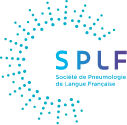L’épingle à foulard : un nouveau corps étranger intrabronchique - 21/09/10
 , H. Afif, W. El Khattabi, A. Aichane, Z. Bouayad
, H. Afif, W. El Khattabi, A. Aichane, Z. BouayadRésumé |
Objectif |
Le but de ce travail était d’illustrer les dangers de la tenue d’une épingle à foulard dans la bouche et de décrire les particularités de l’inhalation de ce type de corps étranger potentiellement pénétrant et sa prise en charge.
Patients et méthodes |
Seize cas d’inhalation d’épingle à foulard ont été colligés en deux ans. Il s’agit de 16 patientes, toutes voilées avec un âge moyen de 16,6 ans. Les patientes mettaient l’épingle entre leurs lèvres tout en fixant leurs foulards. L’inhalation est accidentelle dans tous les cas.
Résultats |
Le signe le plus fréquemment rapporté après inhalation était le syndrome de pénétration (66,7 %). Le siège du corps étranger était plus fréquent au niveau de l’arbre bronchique droit (68,7 %). Le délai moyen entre inhalation de l’épingle à foulard et admission au service était de 2,6 jours, extrêmes de quelques heures à 15 jours. La manœuvre d’extraction par bronchoscopie souple a été réussie dans dix cas. Le recours à la bronchoscopie rigide a été nécessaire dans un cas. L’expulsion spontanée de l’épingle à foulard a été notée dans cinq cas.
Conclusion |
L’inhalation d’épingle à foulard représente un potentiel risque culturel chez les femmes qui portent le foulard islamique. La manipulation prudente de ces objets aiguisés hors la bouche peut prévenir cet accident.
El texto completo de este artículo está disponible en PDF.Summary |
Objectives |
The aim of this study was to illustrate the dangers of holding a scarf pin in the mouth and to describe the particular characteristics of the aspiration of a potentially penetrating foreign body and its management.
Patients and methods |
Sixteen cases of inhaled scarf pins were recorded in 2 years. They were all young girls, all veiled with a mean age of 16.6 years. The patients put the pin between their lips while fixing their scarves. Inhalation was accidental in all cases.
Results |
The most common presentation after inhalation was a penetration syndrome (66.7 %). The localization of the foreign body was significantly more frequent in the right bronchial tree (68.7 %). The delay between inhalation and admission to the service ranged from some hours to 15 days with a mean of 2.6 days. Extraction using flexible bronchoscopy was successful in 10 cases. The use of rigid bronchoscopy was required in one case. A spontaneous expulsion of the scarf pin occurred in five cases.
Conclusion |
Scarf pin inhalation is a potential cultural hazard in women who wear the Islamic headscarf. Careful handling of these potentially sharp objects away from the mouth can prevent such accidents.
El texto completo de este artículo está disponible en PDF.Mots clés : Corps étranger, Inhalation d’épingle à foulard, Bronchoscopie
Keywords : Foreign body, Scarf pin inhalation, Bronchoscopy



